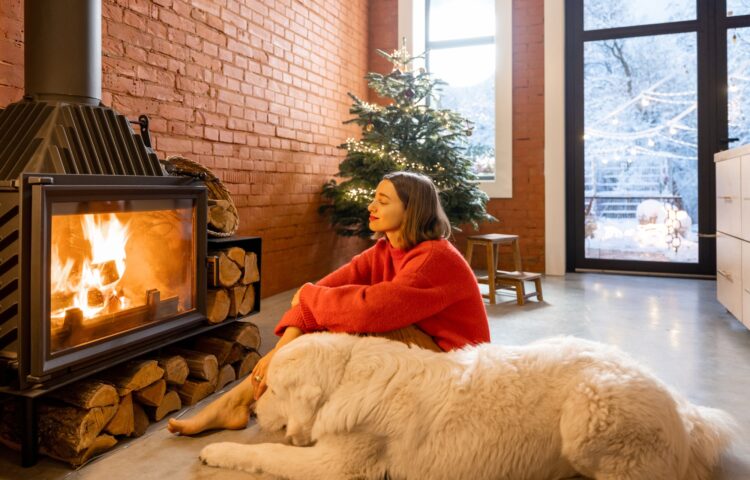Winter ushers in unique challenges: drafty windows, icy walkways, and high heating costs can disrupt comfort and safety at home. But instead of slogging through repairs or layering up inefficiently, there are smarter, creative solutions that blend innovation with everyday simplicity. Let’s explore practical ways to stay warm, safe, and serene this season—with just a few simple tools and habits.
1. Prevent Ice Dams and Stay Dry
Review Your Roof’s Winter Defense
Ice dams form when heat escaping from your attic melts snow on the roof, which then refreezes at the eaves, causing water to pool and seep into your home. Rather than scraping off snow manually, a roof heating cable system provides targeted warmth to prevent dam formation before it starts. Installing these cables along roof edges keeps the melting water flowing off safely, reducing the risk of costly water damage to walls, insulation, and structural elements.
For homeowners looking for practical guidance, this website offers a step-by-step breakdown that can help you avoid expensive repairs and keep your roof in good shape all winter long.
Choose the Right System for Your Needs
Modern systems offer smart features like automatic temperature sensing and programmable timers—so you only use energy when needed. You can install roof cables yourself if you’re handy, or hire professionals who simplify setup and ensure safety. This small investment brings long-term peace of mind when winter storms hit.
2. Keep Your Outdoor Paths Safe and Salt-Free
Prevent Slips and Falls
Winter weather often brings icy walkways and dangerous conditions. A simple, environmentally safe solution: surface treatments and liquid de-icers that act quickly without damaging concrete or plants. Sprinkle these in advance of known ice, or set up light motion-activated lighting to illuminate treacherous spots when the temperature drops.
Create a Go-to Winter Safety Kit
Build a small container near your door with shovel, salt (or sand), sturdy boots, and warm gloves. When ice strikes, you’ll have what you need instantly—no scrambling or delayed action. Keeping this kit in an easily accessible spot can save you precious minutes during a snowstorm.
3. Keep Energy Bills in Check Without Freezing
Insulate and Seal Strategically
Before winter sets in, seal any air leaks around windows, doors, and outlets using weatherstripping or caulk. Add heavy curtains and door draft stoppers to keep warm air in without overheating your space. Insulation is often the simplest and most cost-effective upgrade that pays back year after year.
Layer Smartly, Not Excessively
Instead of cranking up the thermostat, opt for smart layers—like heated slippers, thick socks, or a warm throw. These personal comfort tricks let you stay cozy without wasting energy. Over time, small habits like these keep bills down without making your living space uncomfortable.
4. Prepare Your Body for Cold Conditions
Avoid Cold-Weather Injuries
Reduced circulation and cold floors make slips, aches, and stiffness more likely. Use a soft rug or insulated mat next to your bed or sofa and do simple morning stretches to get your blood flowing. Pairing physical movement with warm hydration keeps your body in balance even when the air is biting.
Keep Feet Warm and Comfortable
Nothing undermines a cozy evening like chilly toes. For soothing warmth, consider innovative tools for foot care—like heated foot masks, warm-soak devices, or strategically layered socks that keep circulation steady and comfort high long after bedtime.
5. Design a Winter-Ready Emergency Plan
Build Your Backup Kit
Winter storms can disrupt power or block roads. Prepare in advance with essentials: long-lasting snacks, drinks, flashlights, blankets, and a first-aid kit. Store it centrally for quick access. A winter blackout can quickly turn stressful without the basics.
Create a Seasonal Calendar
Map out when to service your heater, check insulation, or test battery backups. Small, timely actions now can prevent big headaches later. Pairing regular Wi-Fi alerts with these tasks keeps your home resilient all season long. Many families keep track of these dates in a shared planner or app for accountability.
6. Balance Technology with Human Connection
Use Smart Heating Intelligently
Programs that adjust heat based on your presence or routine reduce energy use without compromising comfort. However, remember: technology should enhance human presence, not replace interaction or common sense habits.
Monitor, Don’t Obsess
If your system allows remote monitoring, use it sparingly. Constant alerts or sudden temperature chasing may heighten stress. Instead, rely on regular system checks and adaptive routines built around comfort—not just efficiency. Resources like this website provide insights into maintaining balance when integrating new technologies at home.
7. Staying Cozy Without Breaking the Bank
Track Savings Over Time
Monitor your energy bills throughout winter instead of focusing on daily costs. Incremental habits—like sealing drafts or layering—can add up to meaningful savings by spring. This reflective practice also helps identify which investments bring the most value.
Invest for Long-Term Ease
Spending smartly on insulated windows, programmable thermostats, or a roof cable system may feel expensive at first. But these upgrades pay dividends in safety, reduced upkeep, and comfort. Even small tools like certified weights for home equipment calibration contribute to long-term reliability and smarter living.
Conclusion
Winter doesn’t have to mean discomfort, high costs, or risk. With thoughtful preparation—smart heating, home insulation, personal comfort hacks, and emergency readiness—you can create a space that’s safe, warm, and efficient. Actionable plans, small investments, and resilient habits will carry you through winter with ease.

